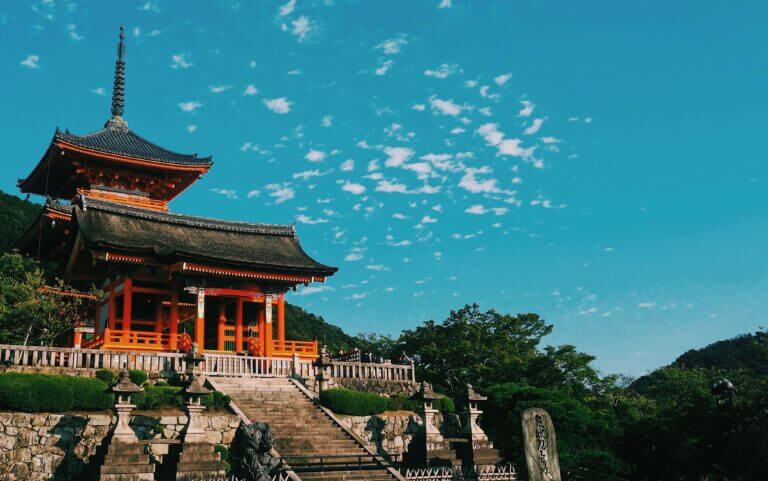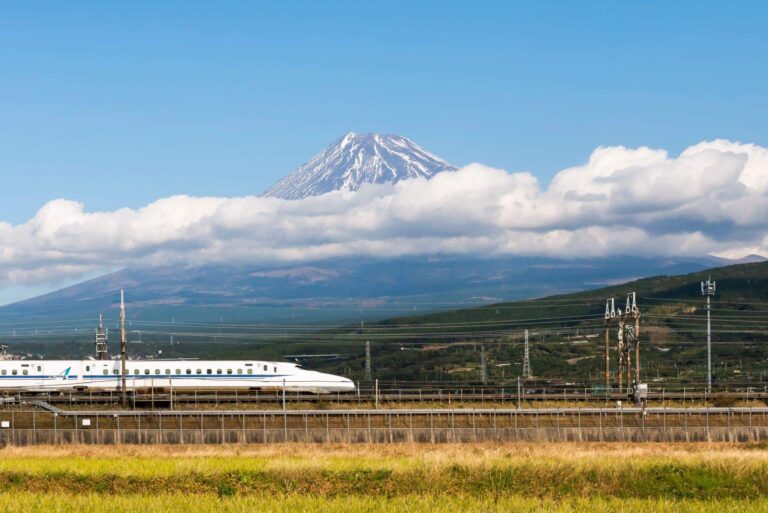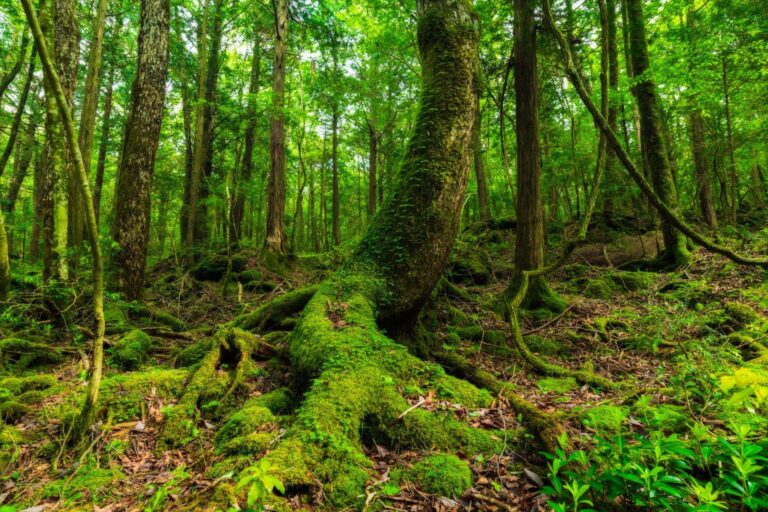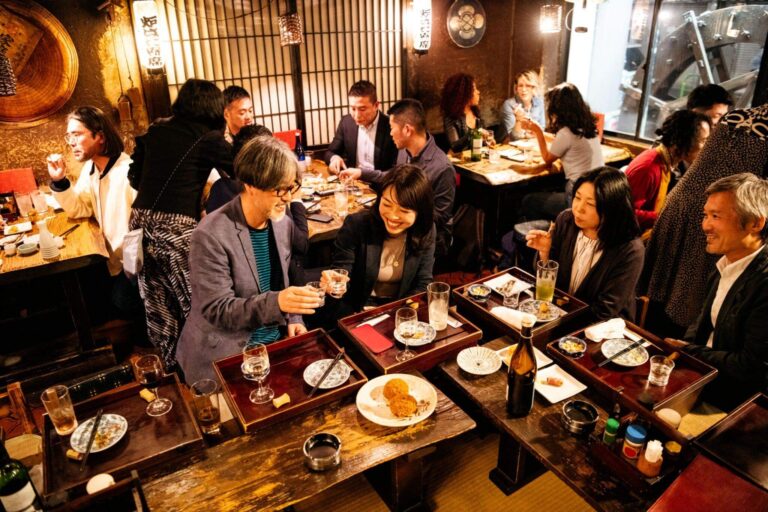List of Contents
Are you ready for a wild and hilarious ride to the top of one of the most iconic and beautiful natural landmarks in Japan? That’s right, we’re talking about none other than Mountain Fuji, also known as Fuji-san. This majestic mountain has been a symbol of Japanese culture for centuries and continues to be a popular destination for tourists and climbers alike.
What exactly makes Mountain Fuji so special, you ask? Well, it’s got it all – a symmetrical cone shape, a towering height, and a snow-capped peak that’ll leave you speechless. And let’s not forget about its rich cultural and historical significance, making it a true gem in Japan.
So, grab your hiking gear, pack a picnic, and get ready to climb to the top of this magnificent mountain. Trust us, the views from the top are worth it!
Location
Located in Yamanashi prefecture, about 60 miles southwest of Tokyo, the mountain is part of the Pacific Ring of Fire, a region known for its high volcanic and seismic activity. In addition to its volcanic origins, Mount Fuji has been shaped by thousands of years of erosion and glacial activity, giving it its iconic symmetrical cone shape.
The mountain is surrounded by four lakes, including Lake Kawaguchiko, Lake Motosu, Lake Saiko, and Lake Shoji, which provide beautiful views of the mountain and are popular tourist destinations.
Mount Fuji is also surrounded by five cities, including Gotemba, Fujinomiya, Minami-tsuru, Fujiyoshida, and Oshino, which provide access to the mountain and offer a variety of outdoor activities and attractions for visitors.
Features
Let us take a closer look at the physical features of the one and only Mountain Fuji! This majestic mountain has been around for centuries, and it’s still standing tall and proud with its impressive features.
First and foremost, Mountain Fuji is a symmetrical cone-shaped stratovolcano. That’s right, folks, this mountain is made up of alternating layers of ash, pumice, and lava, making it one of the most impressive geological formations you’ll ever see.
And let’s not forget about its height! Standing at a towering 3,776 meters (12,388 feet) tall, Mountain Fuji is the highest mountain in Japan and one of the tallest in the world. It’s like a skyscraper, only made of rock and surrounded by beautiful greenery!
But wait, there’s more! Mountain Fuji is also known for its snow-capped peak, which is a beautiful sight to behold, especially during the winter months. This majestic mountain is truly a sight to behold all year round, with its changing seasons and unique weather patterns.
Activities
Mount Fuji is a popular destination year-round, and there are many activities to enjoy depending on the season. Here are some of the most popular activities at Mount Fuji:
Summer (July-August):
- Climbing: The official climbing season takes place during the summer months when the weather is generally mild and the trails are open.
- Lake activities: The lakes surrounding Mount Fuji, including Lake Kawaguchiko and Lake Motosu, offer a variety of water activities, such as boating, fishing, and swimming.
- Hiking: There are many scenic hiking trails in the surrounding areas, including the popular Aokigahara Forest.
Fall (September-November):
- Autumn leaves viewing: The autumn leaves in the surrounding areas of Mount Fuji are a popular attraction, with vibrant shades of red, orange, and yellow.
- Harvest festivals: Many local towns hold harvest festivals and traditional events during the fall months.
Winter (December-February):
- Snow sports: Some ski resorts in the area offer winter sports, such as skiing and snowboarding.
- Onsen (hot spring) visits: There are many hot springs in the surrounding areas, which are popular for their therapeutic benefits.
Spring (March-June):
- Cherry blossom viewing: The cherry blossom season is a popular time to visit Mount Fuji, with many parks and temples in the surrounding areas offering beautiful views of the blooming flowers.
- Festivals: Many local festivals and events take place in the spring months, including the Fuji Shibazakura Festival, where fields of pink moss phlox are in bloom.
Regardless of the season, Mount Fuji and its surrounding areas offer a wide range of activities for visitors of all ages and interests. Whether you’re an outdoor enthusiast, a history buff, or just looking for a unique cultural experience.
Climbing Mountain Fuji
The history of climbing Mountain Fuji dates back to the Edo Period (1603-1867) when the Japanese government encouraged people to visit the mountain as a form of pilgrimage. Today, it remains a popular destination for tourists and climbers, with more than 300,000 people attempting the climb each year.
There are several popular routes to choose from when climbing Mountain Fuji, including the Yoshida Trail, the Subashiri Trail, and the Gotemba Trail. No matter which route you choose, it’s important to prepare properly for the climb. This means training ahead of time, packing appropriate gear, and being mindful of the weather conditions.
Cultural Significance
Mount Fuji is not just a beautiful natural landmark in Japan, it also holds a rich cultural significance that has captivated the hearts of the Japanese people for centuries. From its religious roots to its impact on art and literature, Mount Fuji has been an integral part of Japanese culture and continues to inspire and captivate people from all over the world.
Religious Significance
Mount Fuji has been a sacred site for the Japanese people for centuries, with its first recorded ascent dating back to the 700s. It has been considered a sacred site by both Shinto and Buddhist sects and is believed to be the home of the gods. The mountain is also believed to have healing powers, and many people make pilgrimages to the summit to purify their spirits and seek blessings.
Impact on Art and Literature
Mount Fuji has been a popular subject in Japanese art and literature for centuries. Its symmetrical cone shape and snow-capped peak have been depicted in countless works of art, including ukiyo-e woodblock prints and haiku poems. In the 19th century, artists and poets from around the world were captivated by Mount Fuji’s beauty, leading to an explosion of Western-style paintings and poems about the mountain.
National Symbol
In the 19th century, Mount Fuji was designated as a national symbol of Japan and became a symbol of national pride. The Japanese government established the Mount Fuji National Park to protect the mountain and its surrounding areas, and it has since become one of the country’s most popular tourist destinations.
Mount Fuji is much more than just a natural landmark in Japan. Its rich cultural significance, rooted in religious beliefs and reflected in art and literature, makes it a truly unique and special place.
Festivals and Events
1. Fuji Shibazakura Festival
Held annually in the spring, the Fuji Shibazakura Festival is a breathtaking display of pink and white moss phlox that covers the slopes of the mountain. With over 800,000 of these beautiful flowers in full bloom, it is a sight to behold and a must-visit for all nature lovers. The festival also features food stalls, live performances, and various other attractions, making it a fun day out for the whole family.

2. Mount Fuji Climbing Festival
For those who love a challenge, the Mount Fuji Climbing Festival is the perfect event. Held in August, the festival sees thousands of climbers make their way to the summit of Mount Fuji, many dressed in traditional clothing and carrying offerings for the gods. Whether you’re an experienced climber or just looking to test your limits, the Mount Fuji Climbing Festival is a once-in-a-lifetime experience that you won’t forget.
3. Lake Kawaguchiko Fireworks Festival
The Lake Kawaguchiko Fireworks Festival is one of the most popular events in the area, and for good reason. Held annually in August, the festival features a stunning display of fireworks set against the backdrop of Mount Fuji, making for a truly magical and memorable experience. With food stalls, live performances, and various other attractions, the Lake Kawaguchiko Fireworks Festival is a must-visit for anyone in the area during the summer months.

4. Mount Fuji World Heritage Festival
The Mount Fuji World Heritage Festival is a celebration of the mountain’s designation as a UNESCO World Heritage site. Held annually in June, the festival features traditional music and dance performances, food stalls, and various other attractions, making it a great day out for the whole family.
Japan’s unchallenged Iconic Symbol
From its stunning physical features to its rich cultural significance, Mount Fuji has left us in awe. And let’s not forget the numerous festivals and events that take place throughout the year, making it a hub of activity and a true celebration of Japanese culture.
But all good things must come to an end, and as we pack our bags and say farewell to Mount Fuji, we can’t help but feel a little bit melancholic. However, we take comfort in the fact that this majestic mountain will always be here, waiting for us to return and continue our love affair with it.
So let’s raise a glass (or a cup of steaming green tea) to Mount Fuji, the king of mountains, the symbol of Japan, and the star of our hearts. Until we meet again, farewell to Mount Fuji!







